Any rose is a charming, fragrant flower. Its indoor varieties are not inferior to garden beauties. Before you plant such a plant, you need to find out its features and rules of care for such a bush.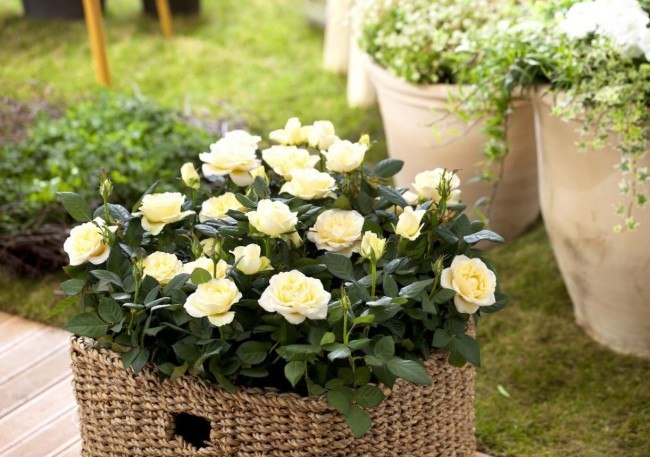



Varieties of indoor roses
Roses are divided into species, which, in turn, include their varieties.
Hybrid Tea Roses
This species comes from India. It has an attractive appearance due to the lush bloom. The advantage also becomes a strong pleasant aroma. Among the popular varieties of this species is Prima Ballerina. Peer Gynt, Gloria Dei, Deep Secret. These varieties are too tender for planting in open ground. Therefore, their place in the home, where the roses will not feel damp and dank cold.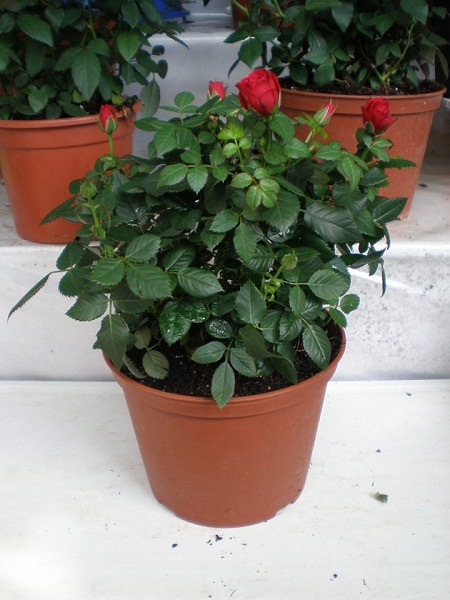
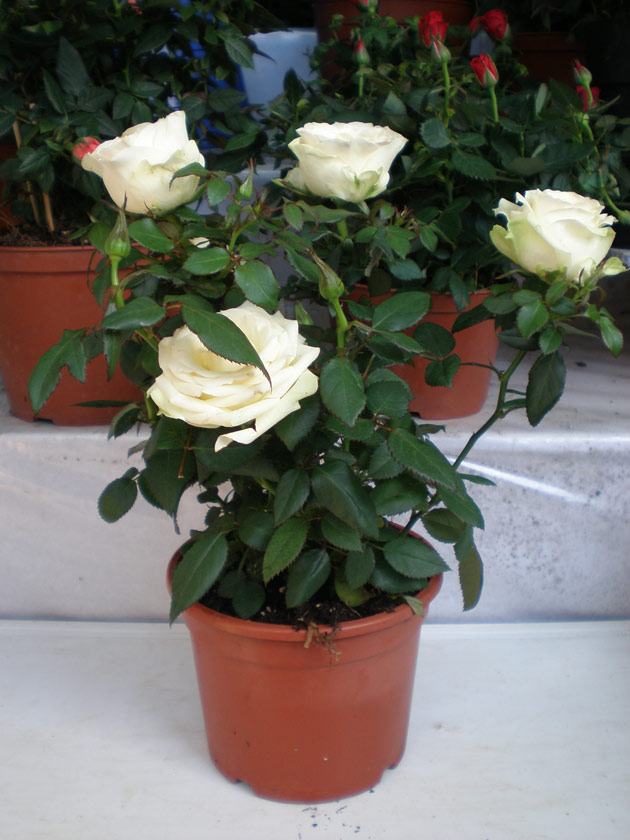
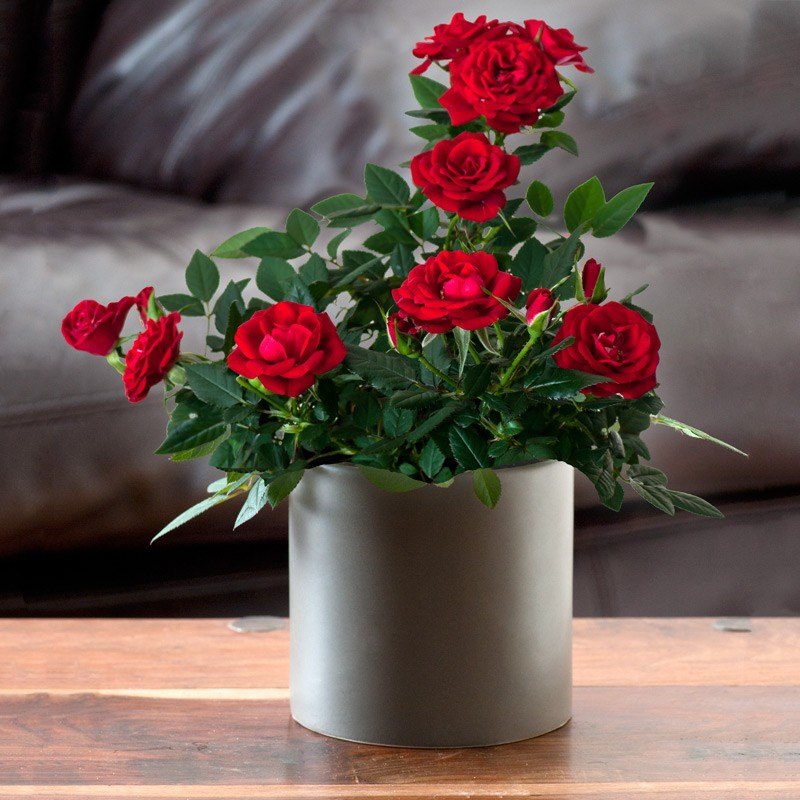
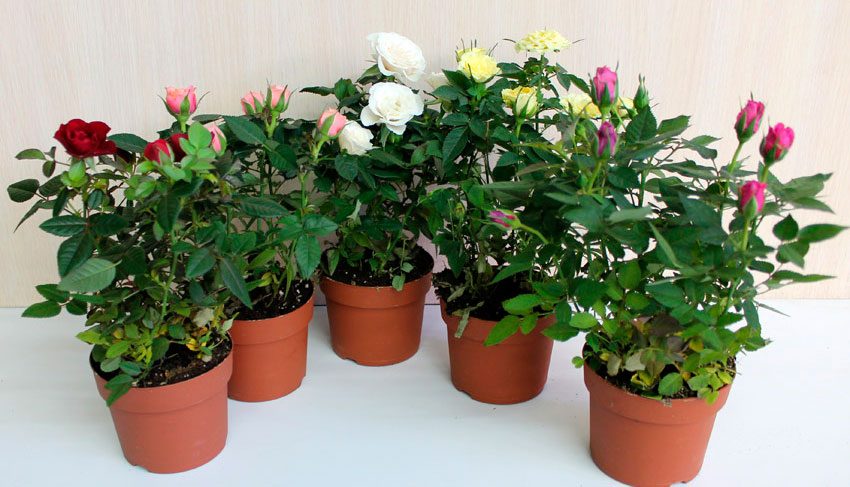
Polyanthus roses
These bushes grow beautifully in the apartment. At the same time spread a pleasant aroma and do not require particularly complex care. Angel Wings, Betty Prior, Gloria Mundi are most often grown in the house.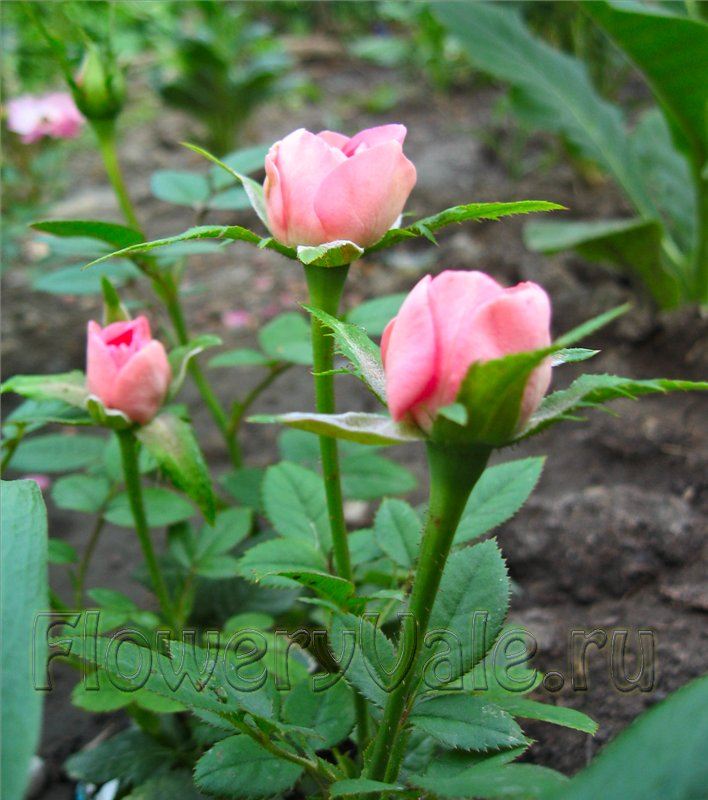
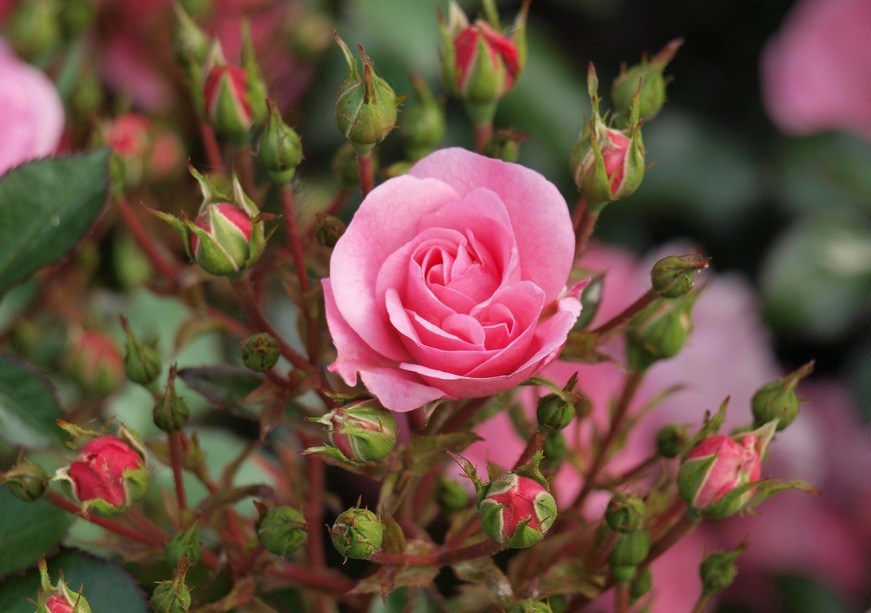
Miniature varieties
The hybrid obtained as a result of the crossing of two previous varieties became the Miniature species. Shrubs look like thumbnails of simple garden flowers. They are decorated with small leaves and buds that are collected in inflorescences. Having blossomed, the buds emit a wonderful fragrance all summer. Among the most popular varieties Lavender Jewel, Amulett, Sunblaze, Green Ice. These roses do not need pruning, which greatly simplifies the care.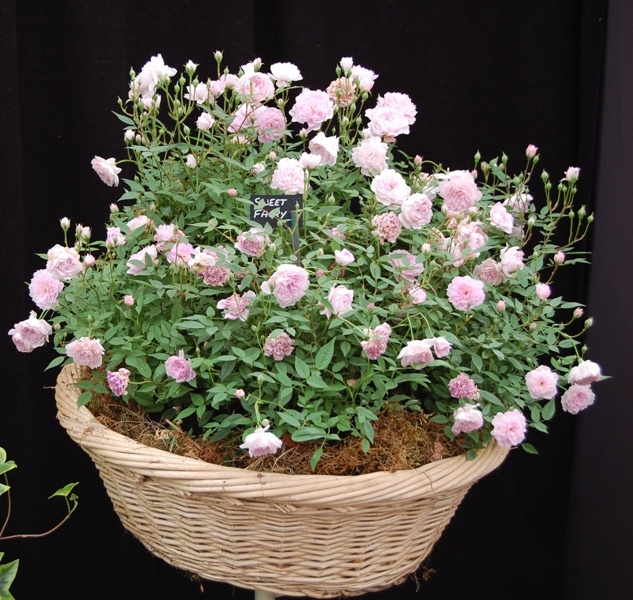
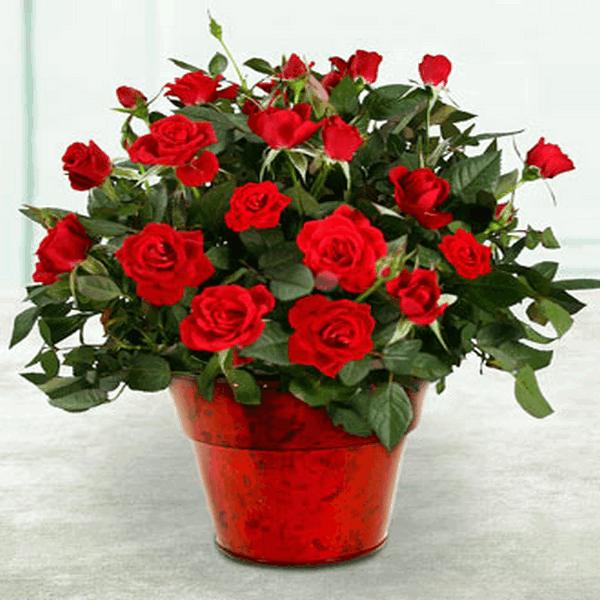

Bengal roses
This species is one of the most popular. It does not lose foliage throughout the entire life cycle and does not require pruning. Rose blooms magnificently, but does not give its owner the smell. The fragrance is completely absent. Among the popular varieties of Pink Grotendors, Ophelia.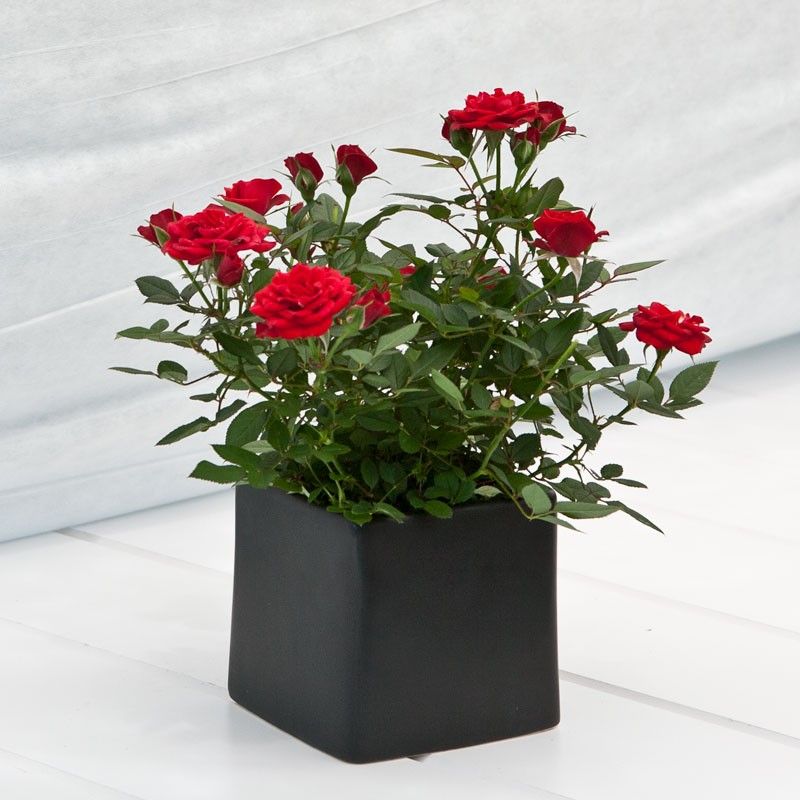
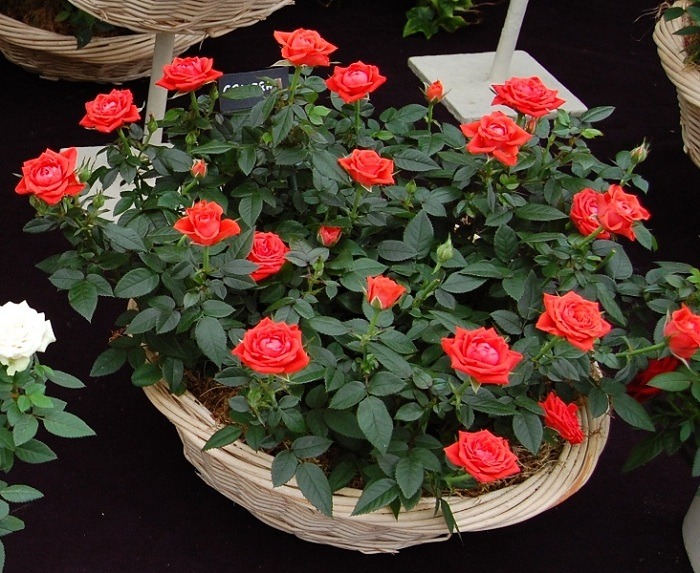
Another species popular in our lane is ground cover varieties. Among them it is worth mentioning The Fairy, Alba, Magic.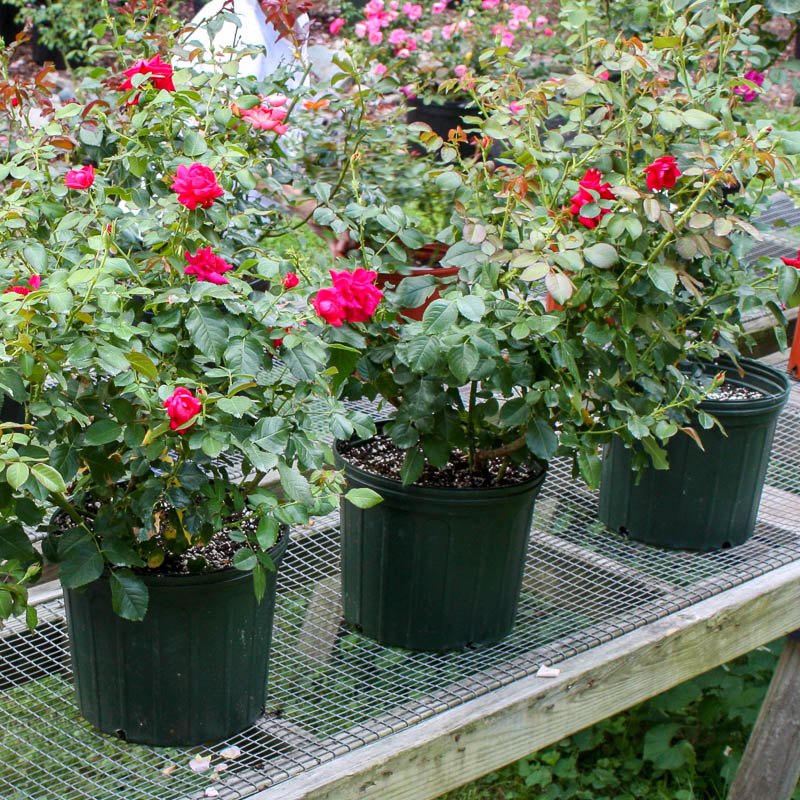
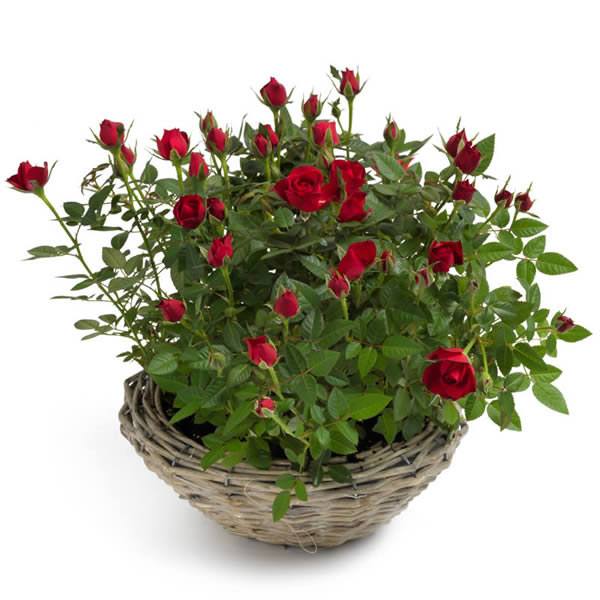
Care room rose at home
Competent care, first and foremost, is designed to extend the flowering plants. There are several simple rules that will make flowers more lush for a long time. A pot with a flower bush should be located at some distance from other plants, as the rose needs space on the windowsill. It is better if this window sill is located in the southern part of the apartment. Land in a pot must be kept wet. The frequency of watering depends on the season and the degree of dryness of the air in the room.
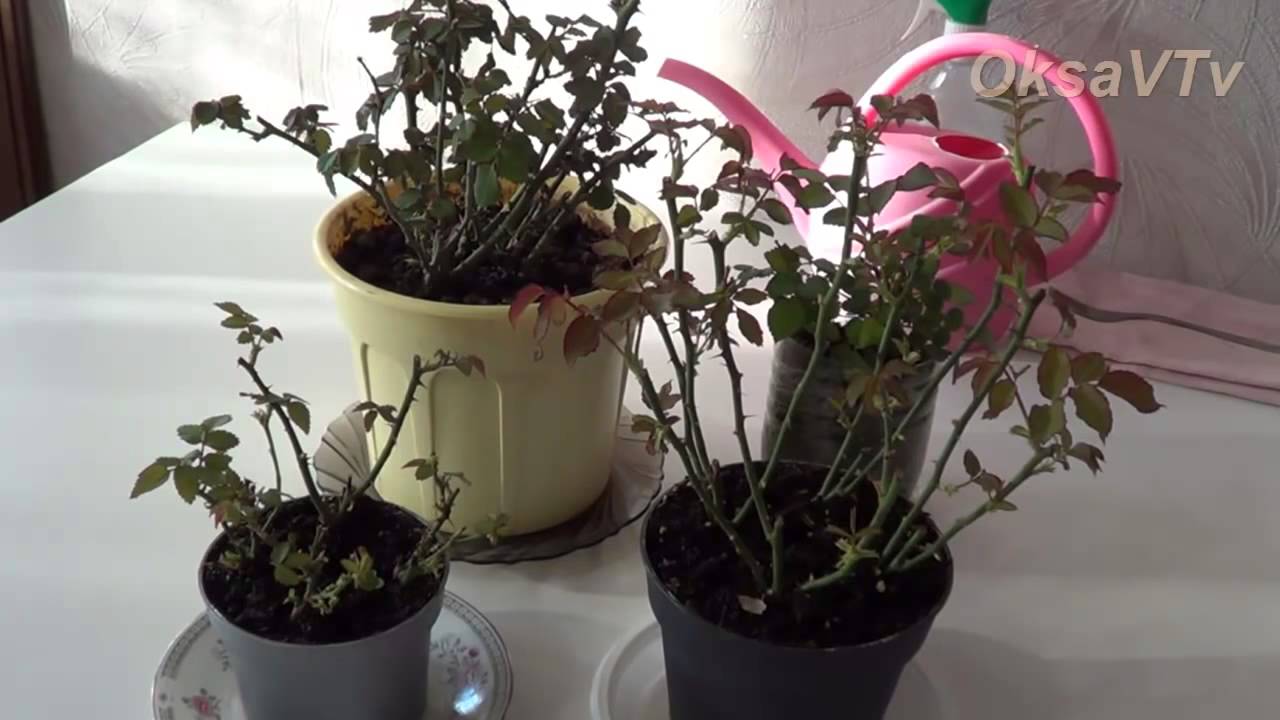


Roses are very painful tolerate the appearance of pests and diseases. Therefore, you need to carefully monitor the first signs of manifestations of ailments and fight them. It is also important to transplant the grown rose in more volume dishes in time. The period of growth and flowering favorable for feeding. To do this, you should choose special drugs and carefully study the instructions on the package.
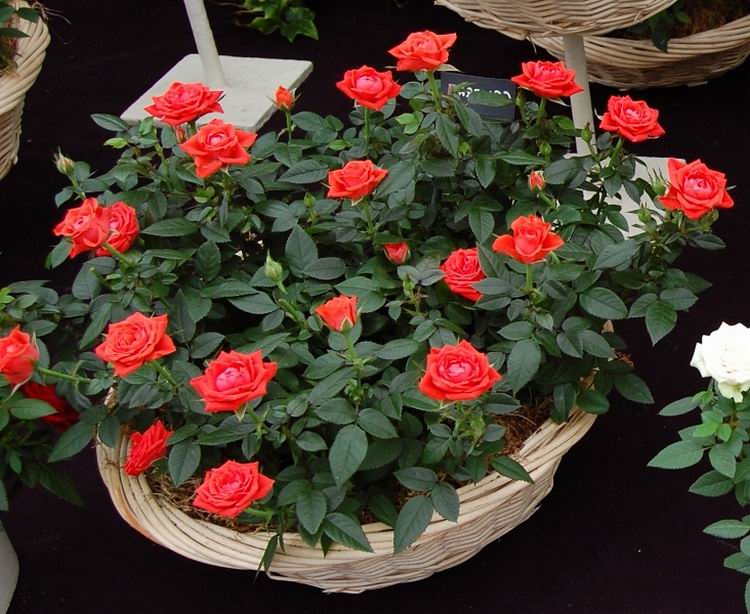
In order not to harm the bush, it is necessary to gently handle its roots and not to damage them. Cold water is contraindicated to the plant. In addition, it is necessary to remove dried flowers, stems, leaves. Direct sunlight is also deadly for roses of any kind.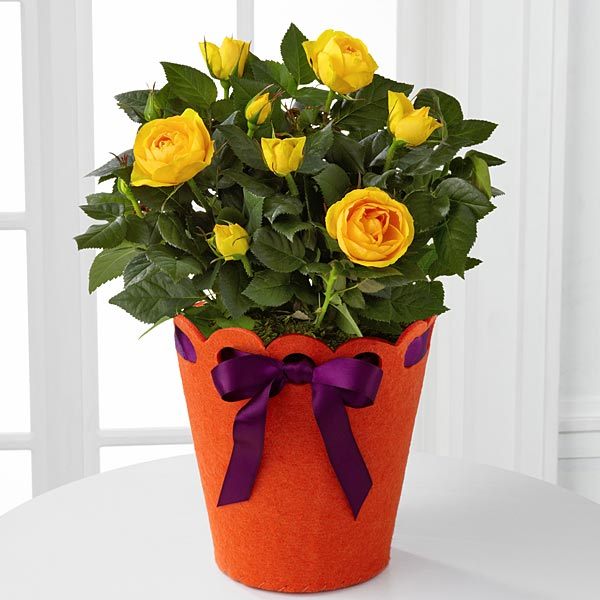
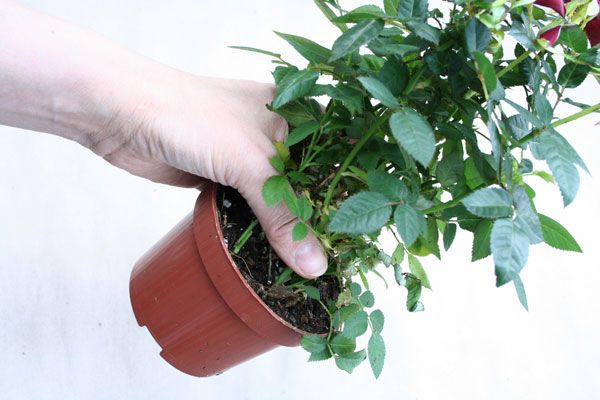
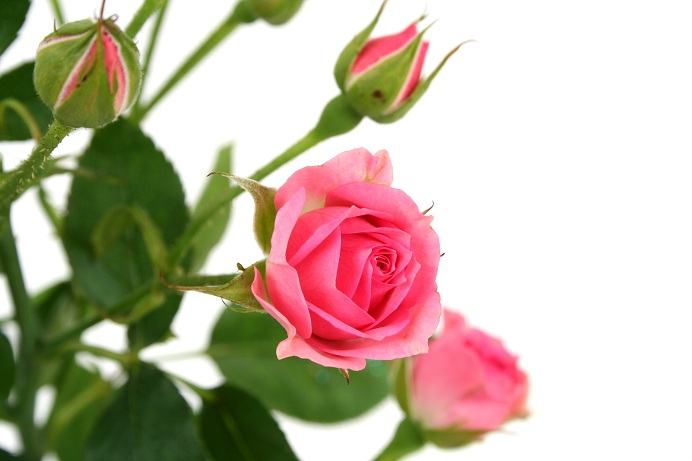

Adaptation of the flower at home
In the first days in the house, it is recommended to create conditions similar to those that were in the store or in the place where the rose came from. Do not immediately transplant the flower in another pot. After a short period of adaptation, it is possible to bring the temperature and wet conditions to a more favorable level.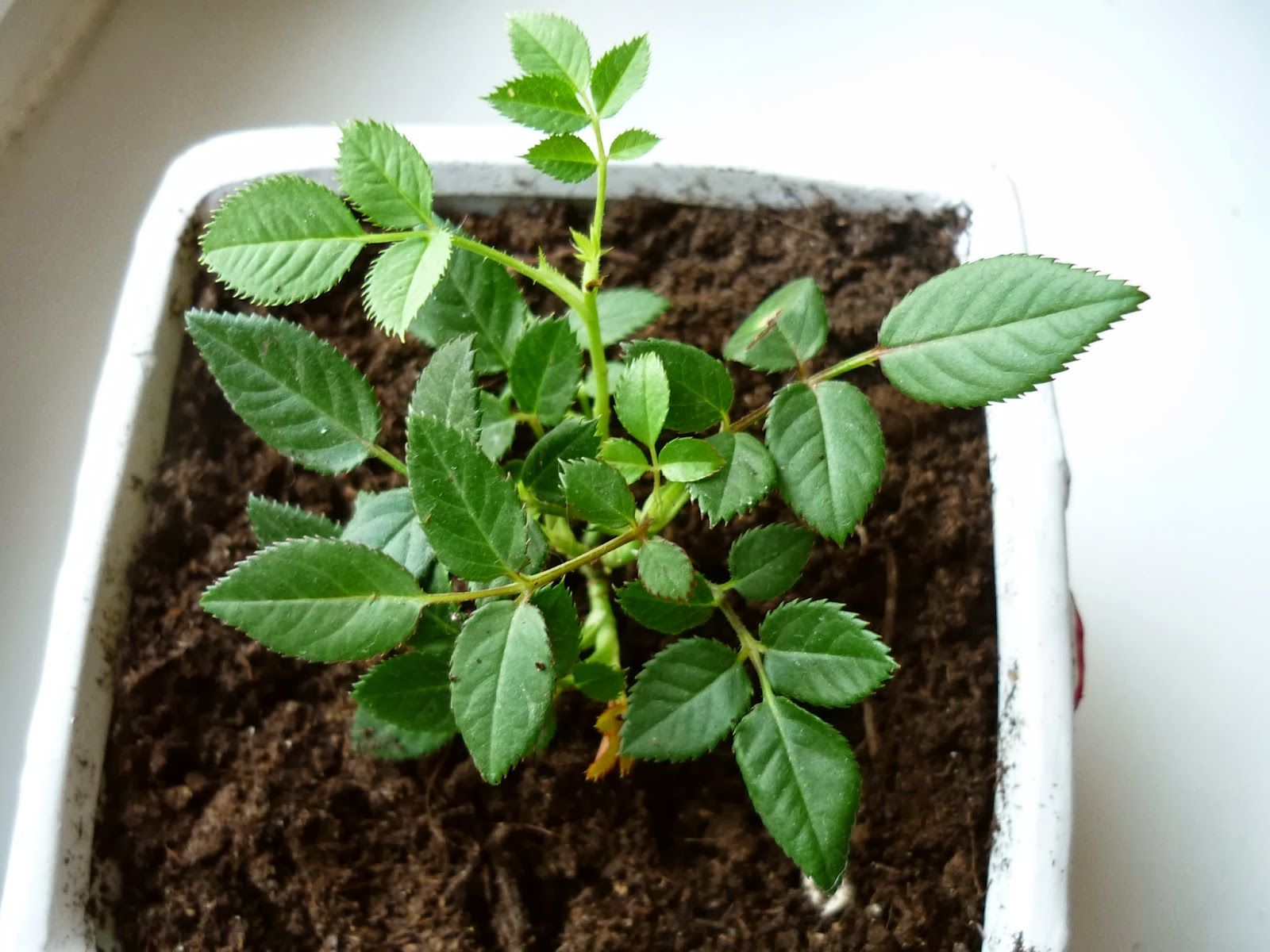
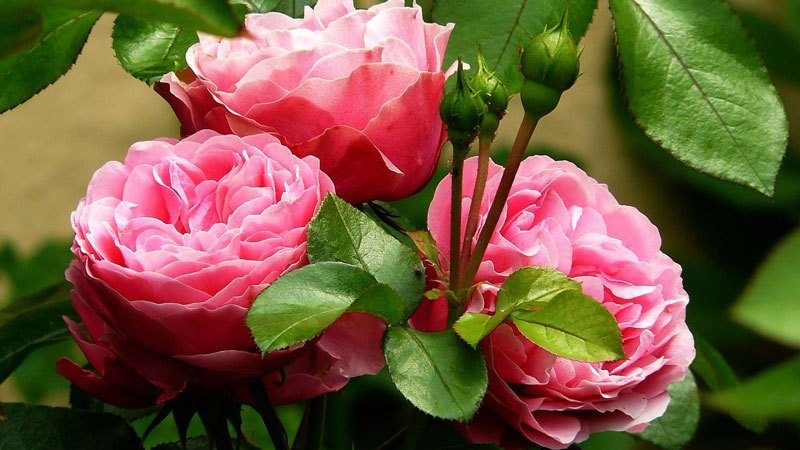
During adaptation, it is necessary to avoid drafts, watering at room temperature and avoid directing the best sun.
Transfer
It is important not to damage the roots when transplanting. To do this, it is better to leave the ground around the roots untouched and move it into a new pot with a lump. The soil should be special for roses. She can be found in flower shops. An alternative can be any soil for indoor flowering plants.
Special attention deserves a pot for a rosebush. It should be spacious and high. Holes should be made at its bottom. Having watered a bush in an old pot, it can be moved to a new one and immediately covered with fresh soil. On the day you need to put the plant in a shaded place, after which you can put it on a well-lit window sill, where it will be permanently.
Flower care depending on the season
The change of season dictates changes in the change of principles of care for the room rose. In the summer, the plant should not be overheated, the ground should be constantly humid, and the number of waterings large compared to winter. In summer, the bush will feel great outdoors, for example, on the terrace or on the balcony.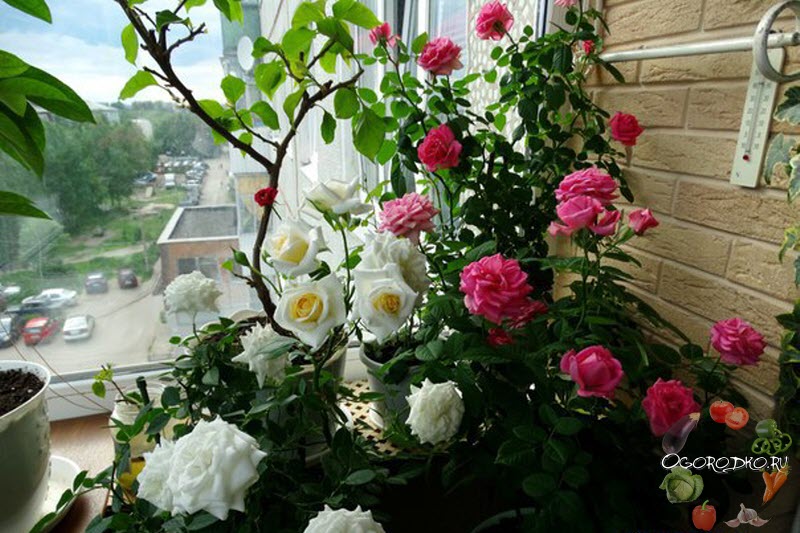

In the autumn you need to reduce watering and move the flower to a warmer room. For wintering is to carry the plant in a cool place. There should be no heaters nearby. It is better to cut the branches, and reduce watering to a minimum.
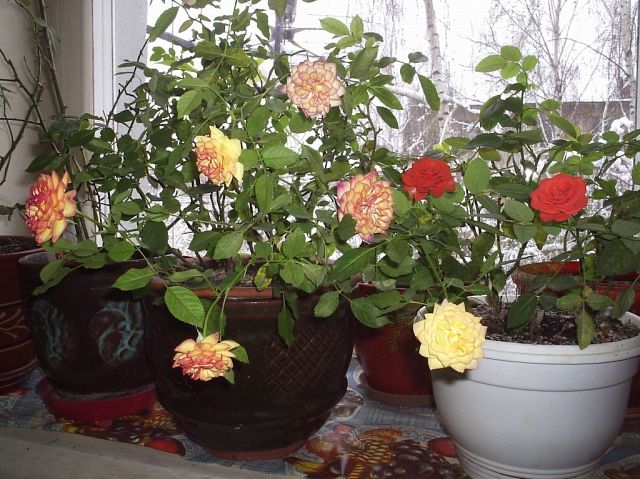
Pests and diseases
Dangerous for indoor roses are spider mites. They are easy to spot by noticing a web in the leaves. The leaves themselves have signs of physical damage. This parasite not only spoils the look of the flower, but also spreads other infections.Get rid of the uninvited guest, you can use a special treatment.



Black leg is another disease that afflicts roses. The main source of infection becomes a fungus on the soil. The base of the flower becomes dark and weak. Flower immunity decreases and the plant dies. If a healthy flower does not bloom, then it simply does not have enough light or other conditions that provide comfort.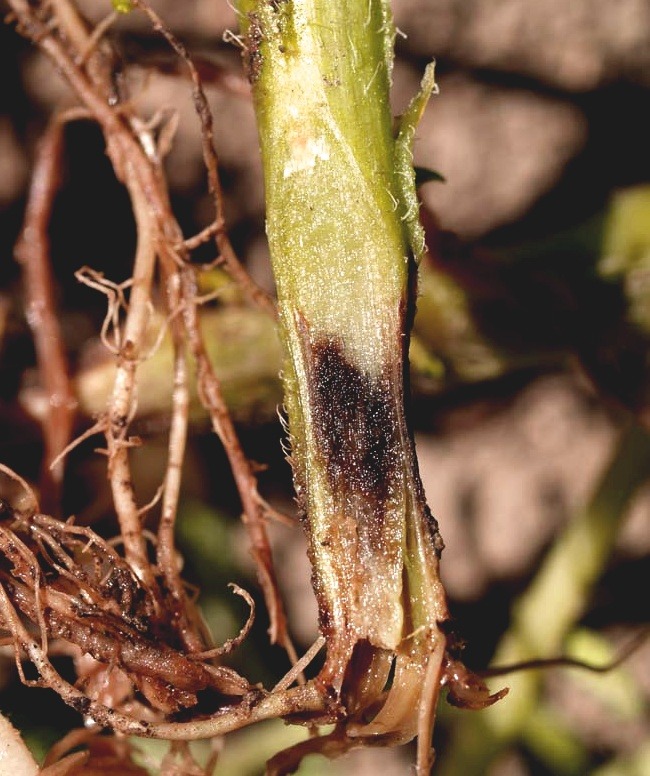
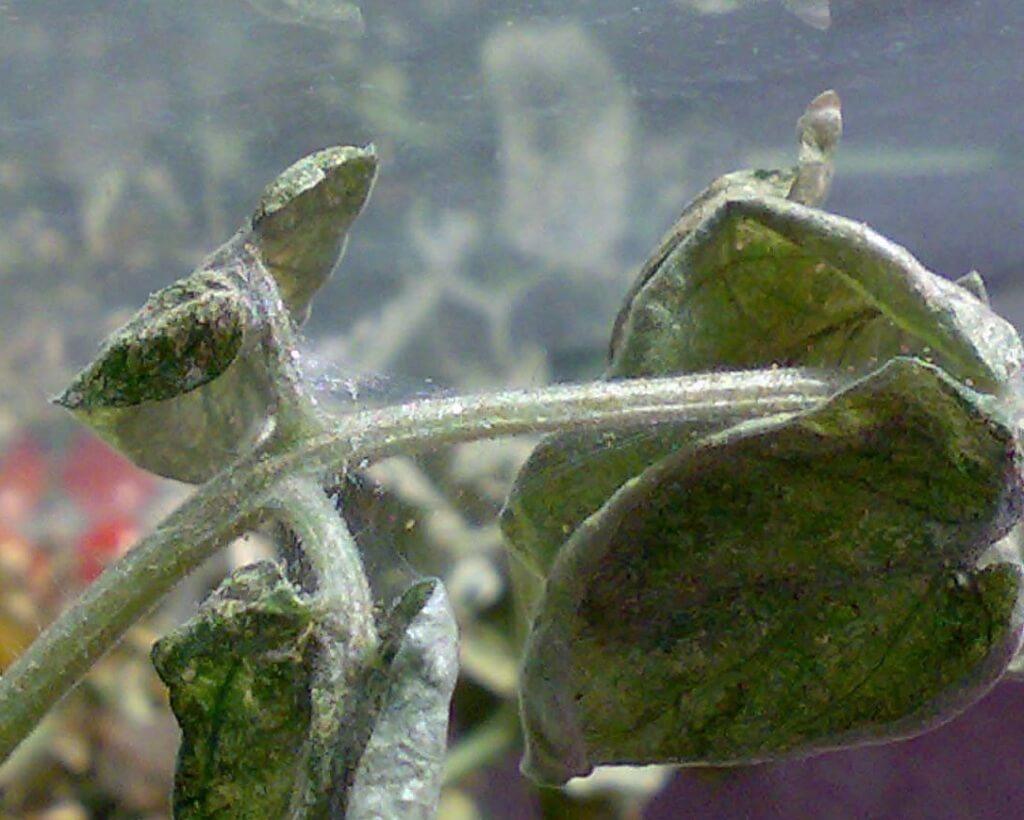

Trimming room roses
For the rose to develop and bloom magnificently, it needs to be cut in time. To do this, get a knife or shears. Each of the varieties has its own conditions for pruning, and the gardener forms the crown at its discretion.
Trimming is carried out in the spring in March or April. If the flower is cut in time, then bloom come earlier and will be more magnificent. Cutting tools must be as sharp as possible, otherwise you can inflict lacerations on the plant and it will die. Most often, a cut is made half a centimeter above the kidney at an angle of 45 degrees.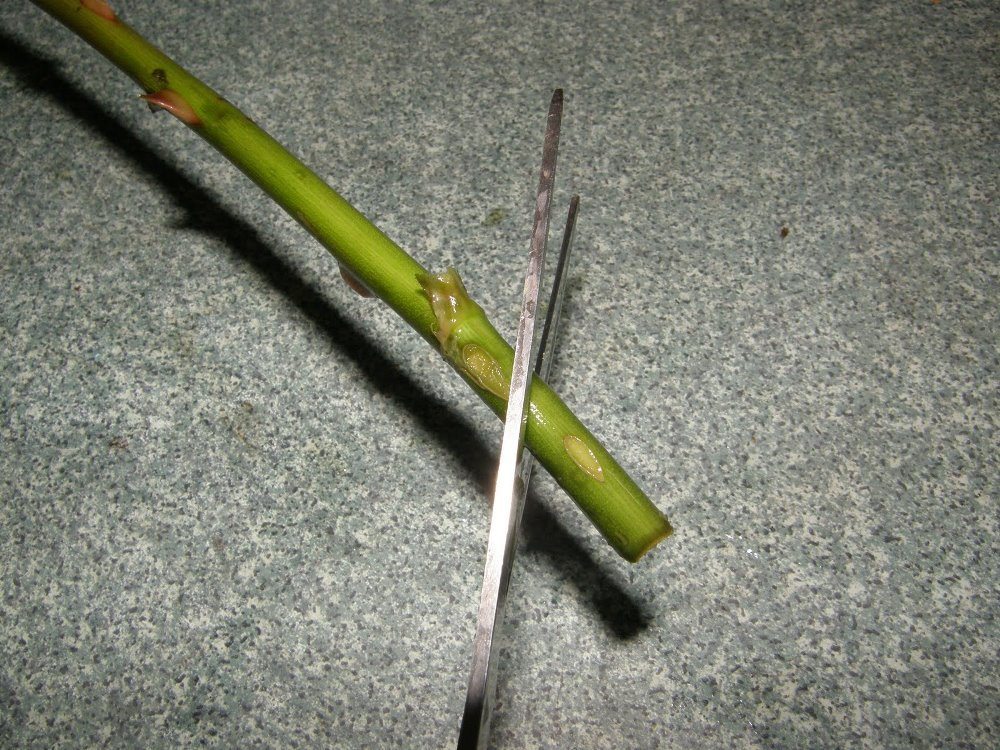

To see which parts need trimming, start better with thinning. It is necessary to remove dry and diseased branches, leaves and dead buds. You also need to get rid of the shoots directed into the bush and those that do not have a kidney at the very top. Then, on a plant with large flowers, all the excess buds will be removed, except for three.


Reproduction room roses
For reproduction by cuttings, the healthiest and strongest of them is taken. It should only be faded or preparing to bloom, but already stiffened. The length of a suitable specimen reaches from 12 to 30 cm. 2-3 buds and 2-3 leaves should be preserved on it.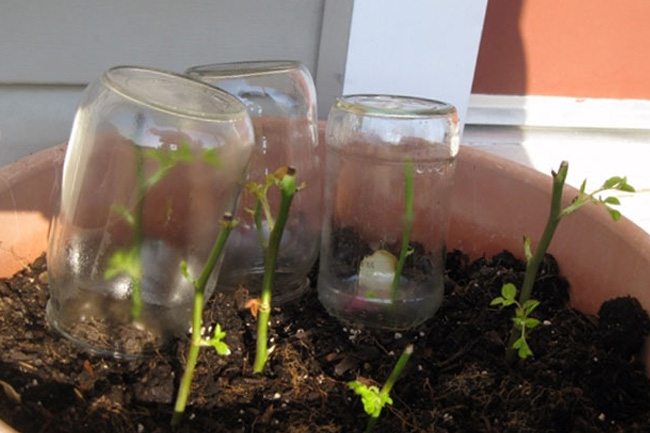

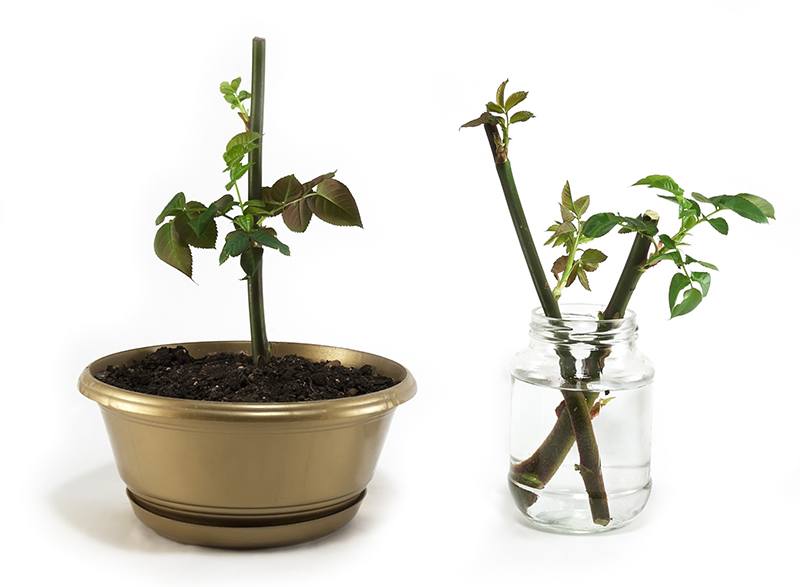

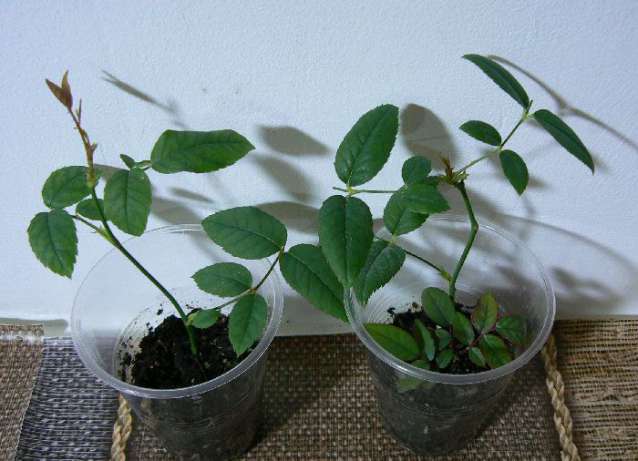
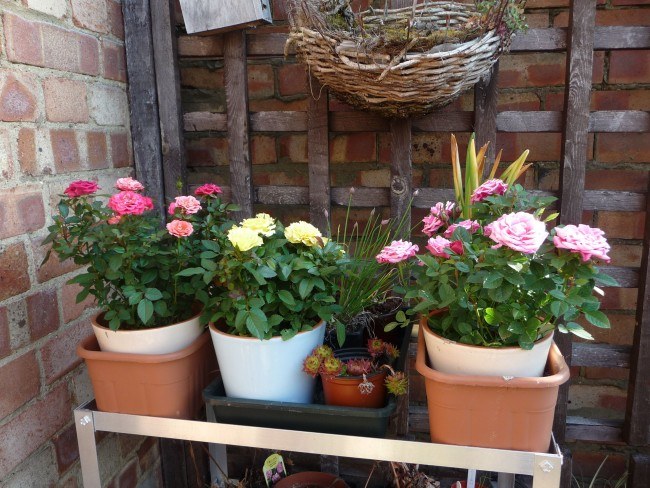
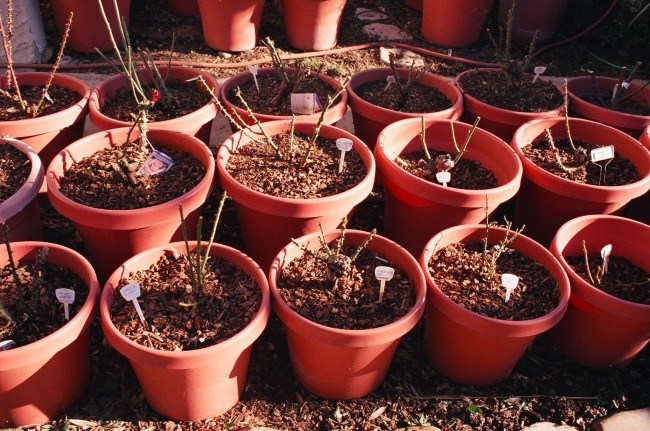

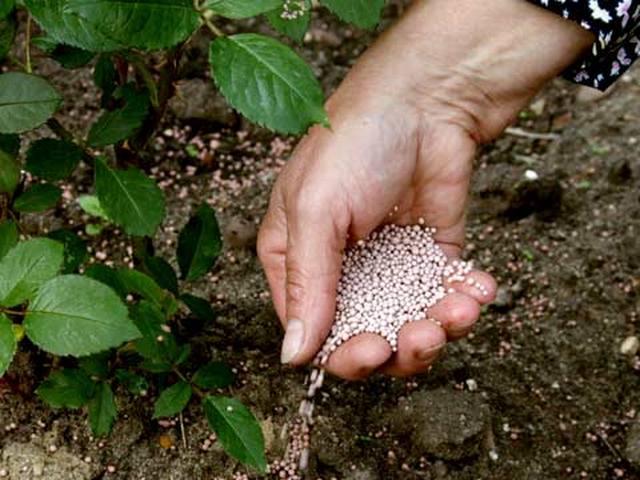

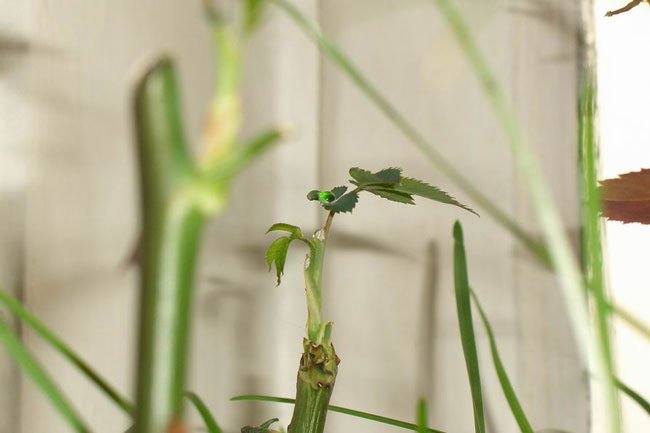

Cuttings must be kept in a solution of Heterouxin or another suitable substance. After that, the cutting is placed in water and put on a well-lit place. Here he will stand until the roots. Next, you need to prepare the dishes with the ground and place the cutting with the roots there. Top recommended to cover the jar to create greenhouse conditions. When the cutting is firmly rooted, it can be moved to a larger pot, equipped with a drainage system. Within a year, the stalk will develop into a full-fledged young rose bush.














































